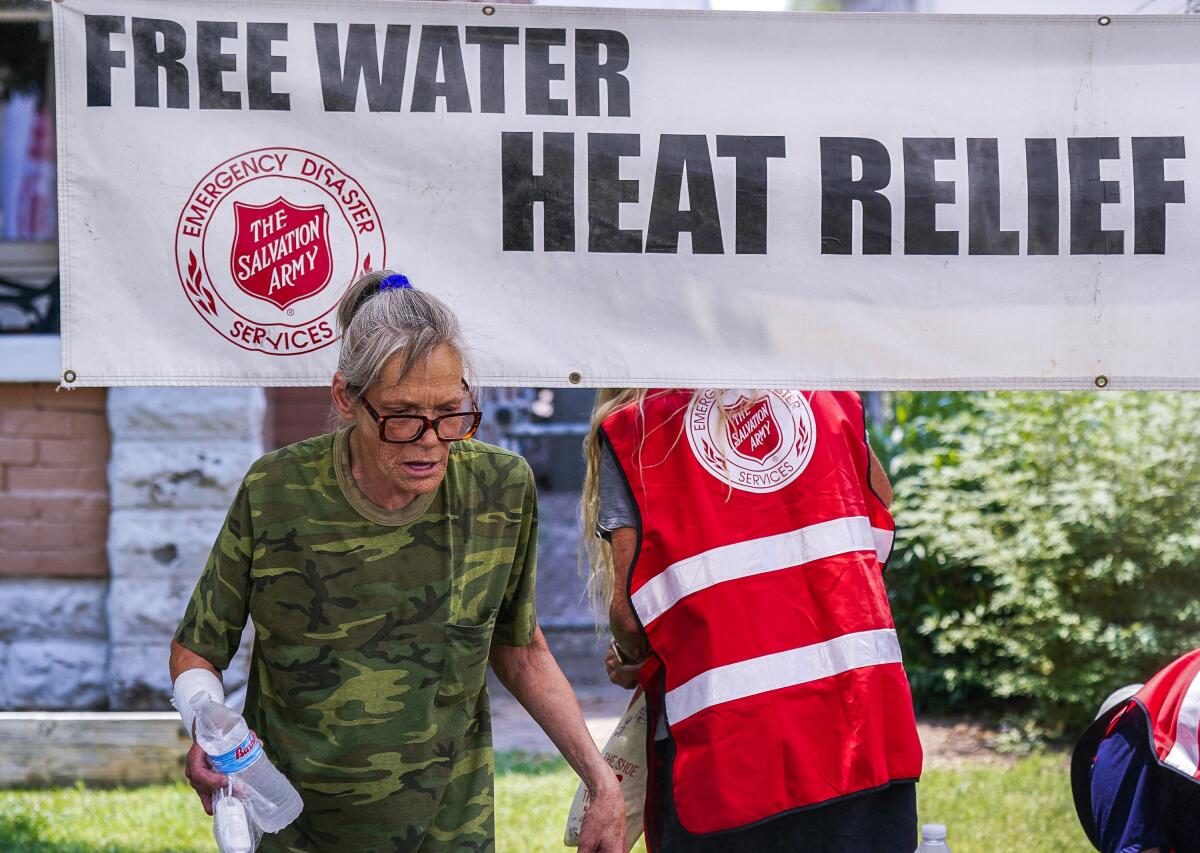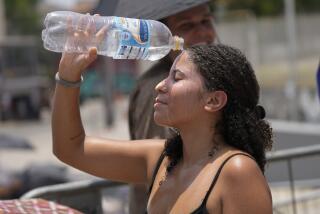Op-Ed: Expect hotter and deadlier heat waves that will make this summer seem cool

It is getting hotter. As astonishing as the deadly Pacific Northwest heat wave was, it was a direct result of global heating, and therefore not actually unexpected.
Global heating is exactly what it sounds like, and many of the most devastating effects are obvious. On a heating planet, of course ice sheets melt and sea levels rise. How could they not? On a heating planet, of course fuel dries and wildfires engulf whole forests and the towns nestled within. On a heating planet, of course heat waves get hotter and deadlier.
What was astonishing was the sudden lurch out of the deceptively safe-feeling realm of prediction and into the brutal realm of physical reality. Sustained temperatures well over 115 degrees in the Pacific Northwest and Canada, with the all-time Canadian heat record shattered, represent just another of the increasingly common climate events that are impossible to dismiss, such as the 2020 wildfires in the American West, which were themselves made possible by extreme heat.
The heat wave was caused by a high-pressure “heat dome,” which may be linked to Pacific Ocean heating and changes in the jet stream due to increased Arctic temperatures. These climate connections require further research, but what is clear is that, overall, a hotter Earth translates to hotter extremes, as the entire probability bell curve of weather shifts to the right.
We do not know exactly where, when and how intensely the next heat waves will hit, but we do know that they will hit. To say that this was a “once in 1,000 years” event is nonsense at this point, because the baseline has shifted so radically.
Heat waves have been getting worse for decades, as global mean temperatures have risen. They are becoming more intense, lasting longer, affecting larger areas and hitting earlier in the season. One recent study projects that if humanity fails to rapidly transition from fossil fuels, a wide swath of the tropics will experience deadly heat conditions nearly every day of the year by the end of the century. In this scenario, hundreds of millions of people, perhaps billions, could be forced to choose between death and migration.
Another recent study projects the emergence of future heat waves with “wet bulb” temperatures exceeding 95 degrees. Wet bulb temperatures combine the effects of temperature and humidity in one number, a better measure of heat stress to our bodies. Sweat is our bodies’ natural way to deal with extreme heat, but this evaporative heat dissipation system breaks down in high humidity. This is why muggy heat feels so much worse than dry heat at the same temperature. Sustained wet bulb temperatures over 95°F are fatal, even in the shade.
Climate and ecological breakdown are here, and despite all our technology, it turns out we are still mammals living on the surface of a planet. Regions that routinely surpass deadly heat thresholds will become increasingly uninhabitable by humans. And long before this occurs, extreme heat, especially when coupled with climate-induced drought, will lead to ever more intense wildfires and crop failures. It will also break things — our infrastructure was not designed for the temperatures we are now starting to experience.
Most climate impacts will be irreversible for thousands of years. Some, such as ice sheet loss, sea- level rise, and ecosystem and biodiversity loss, will last far longer. And as bad as things seem now, they will continue getting worse so long as greenhouse gas emissions continue to soar.
We are clearly in a climate emergency, with the coming natural disasters the result of human decisions. Although there is no quick way back to a normal climate, we can still limit further breakdown by adopting policies designed to rapidly end all fossil fuel use. This means an immediate moratorium on all new fossil fuel exploration, development and infrastructure, including the Enbridge Line 3 tar sands pipeline being built through the Upper Midwest.
It means ending subsidies to the fossil fuel industry and diverting them toward carbon-free energy systems. It would also be helpful to seek appropriate accountability for fossil fuel executives and lobbyists who have routinely lied and delayed climate action for half a century, as this would help reduce the social approval that fossil fuel still enjoys.
We can no longer deny what we experience. If the climate fires aren’t worse this summer than they were in 2020, it will only be because we briefly got lucky. Future summers will make the summers of this decade seem cool by comparison. There is no stopping this process until we change how we treat the planet.
Peter Kalmus is a climate scientist and the author of “Being the Change: Live Well and Spark a Climate Revolution.” @ClimateHuman
More to Read
A cure for the common opinion
Get thought-provoking perspectives with our weekly newsletter.
You may occasionally receive promotional content from the Los Angeles Times.






